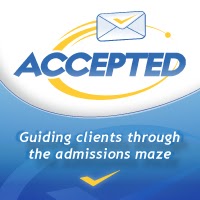This article originally appeared on the Accepted Blog and was written by Jennifer Bloom. She’s a Certified Professional Resume Writer (CPRW) and has been a consultant with Accepted for 17 years.
 The Qualifications Summary section of the resume is, in theory, the first section of the document that the reviewer will read: it sits at the very top after the applicant’s name and contact details, exactly where the eye is naturally drawn. However, if it is a bulky paragraph filled with ambiguous rhetoric, any reader eager to hear about actual applicant effectiveness may skip it altogether. For that reason, it is essential that your Qualifications Summary replace the glib with the glam.
The Qualifications Summary section of the resume is, in theory, the first section of the document that the reviewer will read: it sits at the very top after the applicant’s name and contact details, exactly where the eye is naturally drawn. However, if it is a bulky paragraph filled with ambiguous rhetoric, any reader eager to hear about actual applicant effectiveness may skip it altogether. For that reason, it is essential that your Qualifications Summary replace the glib with the glam.
What is particularly fun about the Qualifications Summary is that there really are no rules for its appearance. The general purpose of the section is to highlight the most impressive details, which would otherwise be less noticeable. That way, illustrations of the applicant’s exceptional impact immediately strike the reader, enticing him to read more out of interest and not out of obligation.
Here are elements you can possibly include in your Qualifications Summary, depending on the length of the document and the space you have to work with:
-
• A short personality summary and/or career history.
• Core Competencies or Skills – Keep in mind, though, that for a one-page document, this is most likely an unwise use of space. If you do decide to include these, highlight the keywords that recruiters in your field will be seeking, not a slew of technology acronyms.
• Achievement Highlights – A very effective use of the space.
• Anything notable in your past that is relevant to the role or program you are applying for. This is especially useful for projects and impacts that occurred further in the past and would otherwise be buried near the end of the resume.
• Testimonials or endorsements compiled from written recommendations or employment reviews by superiors and peers. This is not generally appropriate for an admissions resume but does often generate interview invitations in a professional job application.
To create your Qualifications Summary, first put together the rest of the resume: the professional experience, education, extracurricular activities, etc. Then, go through and manually highlight the accomplishments and details that you think are especially relevant to the position or program you are applying to.
For instance:
-
• If you earned three promotions in two years – four years in advance of the traditional path for your company, this is something that will particularly interest the admissions committee or HR team.
• If you initiated and successfully led a new venture from within your organization, then the effort and its impact are worth bringing to the top of the page.
• If you feel you have a unique attribute that will position you to succeed in the role for which you are applying, differentiating you from all the other applicants, then insert that as well.
• If there are a set of skills that you have gained that are essential to your target role, list them here.
The challenge is deciding among the multiple items that could fit here to truly leave only those that will captivate the reader. As you decide what to include, remember to change the text in the sections below so that the document is not repetitive. For instance, if you highlight a project from your current work in a couple of lines in the Qualifications Summary, use only one line – and perhaps alternate statistics about it – to summarize it in the Professional Experience section.
Finally, play with the layout to make this section readable and appealing. You can use text boxes, bullets, indentations, bold text, or titles to divide the material into short, legible “sections within the section.” Remember the key elements of including white space, keeping bullet points concise, and including numbers to quantify the size and scope of your projects. These will help your Qualifications Summary do the heavy lifting it is meant to!

Leave a Reply